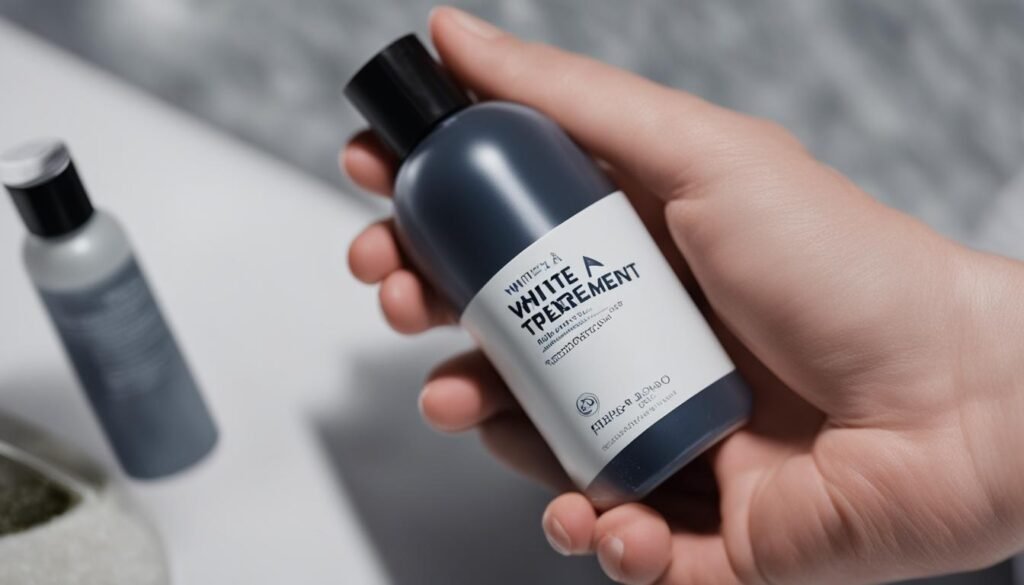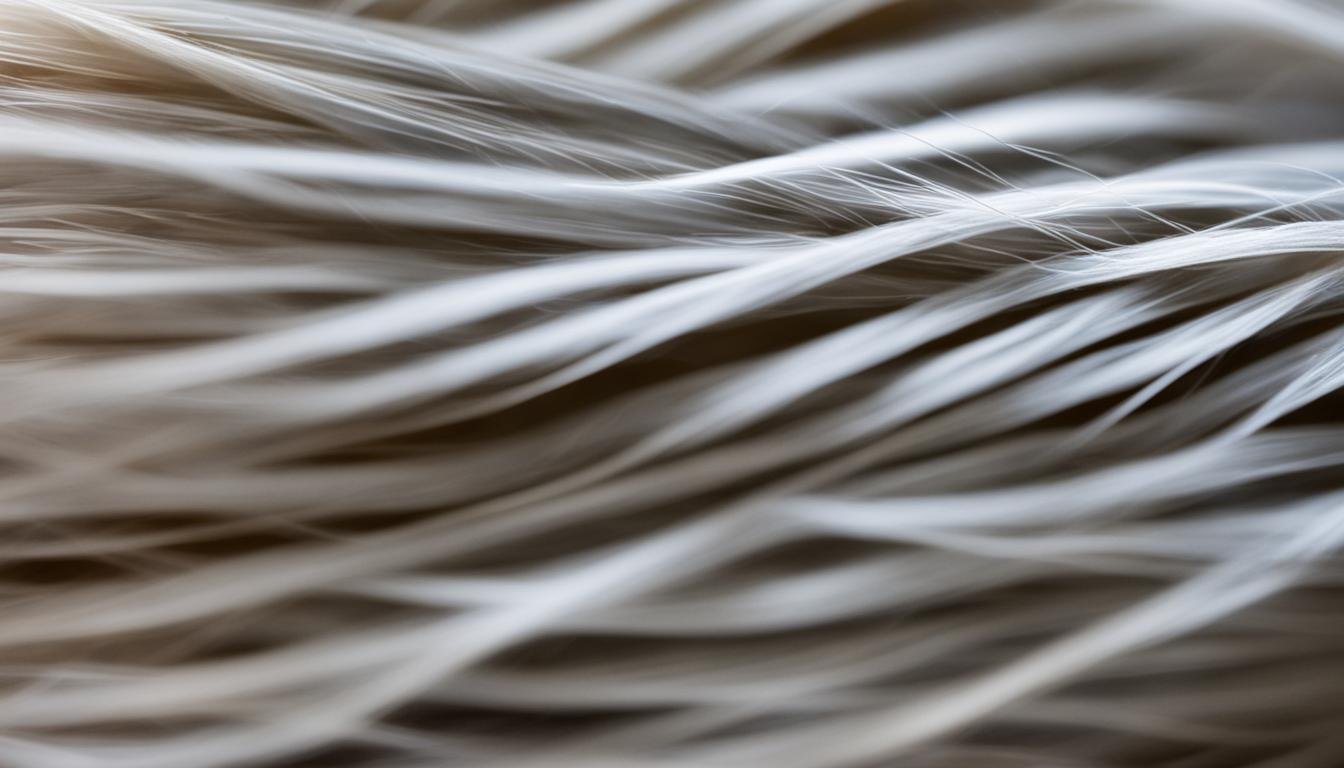Have you ever noticed white stuff in your hair and wondered what it could be? Hair concerns are common, but understanding the underlying reasons behind that white stuff can help you take better care of your hair and address the issue effectively. In this article, we will explore the possible causes of white stuff in hair, including two common culprits – White Piedra and dandruff. We will also discuss how to differentiate between them and provide tips for preventing and treating these conditions.
Proper hair care is essential for maintaining hair health and preventing issues like white stuff. Whether you’re dealing with White Piedra or dandruff, understanding their causes and remedies is key to achieving healthy and beautiful hair.
Let’s dive into the details and discover how to effectively manage and overcome these hair concerns.
Understanding White Piedra
White Piedra is a hair shaft infection caused by the Trichosporon fungus. It is commonly found in soil and dirty water, making it easily transferable to the hair. This infection can affect various types of hair, including scalp hair, facial hair, and body hair.
The Trichosporon fungus manifests as white, grey, or tan pearly nodules that surround the hair shaft. These nodules can cause various symptoms, such as brittle hair, itching, stinging pain, and, in severe cases, hair loss or breakage.
Poor hygiene practices, infrequent shampooing, use of contaminated water, sharing combs, and tying wet hair can increase the risk of White Piedra. Therefore, it is essential to maintain good hygiene habits and avoid exposing the hair to unclean environments.
To give you a better understanding of White Piedra, here’s a summarized list of key points:
- White Piedra is a hair shaft infection caused by the Trichosporon fungus.
- It can affect various types of hair, including scalp hair, facial hair, and body hair.
- The infection appears as white, grey, or tan pearly nodules surrounding the hair shaft.
- Symptoms may include brittle hair, itching, stinging pain, and hair loss or breakage.
- Poor hygiene, infrequent shampooing, use of contaminated water, sharing combs, and tying wet hair can increase the risk of White Piedra.
Treating White Piedra
The treatment of White Piedra typically involves a combination of preventive measures and medical intervention. Shaving off the affected hair and using medicated shampoos that contain antifungal agents like Ketoconazole are often the first line of defense.
In more severe cases, antifungal therapy or oral antifungal medication may be necessary to eliminate the infection entirely. Additionally, maintaining good hygiene practices, such as regular shampooing and avoiding the sharing of combs, can help prevent the recurrence of White Piedra.
Here’s a table summarizing the treatment options for White Piedra:
| Treatment Options | Features |
|---|---|
| Shaving off affected hair | Removes infected hair to eliminate the source of the infection |
| Medicated shampoos | Contains antifungal agents to kill the Trichosporon fungus |
| Antifungal therapy | Administration of antifungal medications to eliminate the infection |
| Oral antifungal medication | Taken orally to target the Trichosporon fungus systemically |
| Good hygiene practices | Regular shampooing, avoiding the sharing of combs, and maintaining cleanliness to prevent recurrence |
Understanding Dandruff
Dandruff is a common scalp condition that affects many individuals. It is caused by an overgrowth of a yeast-like fungus called Malassezia Globosa. This fungus naturally occurs on the scalp and feeds on the oils produced by the sebaceous glands. When there is an excessive production of oil or an imbalance in the scalp’s microbiome, the Malassezia fungus can multiply rapidly, leading to dandruff.
This dandruff-causing fungus irritates the scalp and triggers an inflammatory response, resulting in itching and redness. The excessive growth of Malassezia Globosa also disrupts the normal skin cell turnover process. This disruption causes the dead skin cells on the scalp to shed more frequently, leading to the visible flakes commonly associated with dandruff.
Factors such as hormonal changes, weather changes, stress, and poor hygiene can contribute to the development and worsening of dandruff. Hormonal fluctuations during puberty or pregnancy, for example, can increase oil production in the scalp, providing a favorable environment for the Malassezia fungus to thrive. Changes in weather conditions, particularly dry and cold environments, can also exacerbate dandruff symptoms.
It is essential to note that dandruff primarily affects the scalp and does not involve hair shaft nodules like White Piedra. The symptoms of dandruff include itching, redness, and the presence of white or yellow flakes of dead skin cells on the scalp.
To better understand the impact of dandruff, refer to the table below:
| Symptoms | Causes |
|---|---|
| Itching | Malassezia Globosa fungus overgrowth |
| Redness | Inflammatory response to the fungus |
| Flakes of dead skin cells | Disrupted skin cell turnover process |
Note: Dandruff symptoms may vary in severity, with some individuals experiencing mild symptoms while others may have more pronounced itching and flaking. If you suspect you have dandruff, it is advisable to consult a healthcare professional or dermatologist for an accurate diagnosis.
Dandruff is a common scalp condition caused by an overgrowth of the Malassezia Globosa fungus. Despite being a nuisance, it can be managed effectively with the right hair care routine and treatment options. We’ll explore strategies for treating and preventing dandruff in the next section.
Recognizing the Difference
When it comes to dealing with hair concerns such as white flakes, it’s crucial to distinguish between dandruff and White Piedra. Understanding the key differences can help you choose the right treatment and effectively address the issue.
Dandruff vs. White Piedra
Dandruff mainly affects the scalp, while White Piedra targets the hair shaft. Dandruff is commonly associated with an oily scalp, whereas White Piedra is unrelated to oiliness. The appearance of flakes also varies significantly between the two conditions.
- Dandruff flakes: They are lighter and tend to easily fall off the scalp. Dandruff flakes have a yellowish-white color.
- White Piedra nodules: Nodules associated with White Piedra clump together and stay on the hair. They have a soft, gritty texture and can be white, grey, or tan in color.
It’s important to note that dandruff primarily affects the scalp and is characterized by flakes of dead skin cells. In contrast, White Piedra affects the hair shaft and appears as nodules surrounding the hair.
“Recognizing the difference between dandruff and White Piedra is essential for selecting the appropriate treatment and achieving a healthy scalp and hair.”
Now that you understand the distinctions between dandruff and White Piedra, you can take the necessary steps to address these conditions effectively.
Treating White Piedra and Dandruff
When it comes to addressing White Piedra and dandruff, there are various treatment options available. The chosen treatment approach depends on the specific condition and its severity. Let’s explore the different treatment methods for each:
Treating White Piedra
To treat White Piedra effectively, it is crucial to target the underlying fungal infection causing the hair shaft nodules. Here are some commonly used treatments:
- Shaving off the affected hair: In severe cases, shaving off the infected hair may be necessary to eliminate the source of the infection.
- Medicated shampoos: Using antifungal medicated shampoos containing ingredients like Ketoconazole can help eliminate the Trichosporon fungus. These shampoos should be used according to the instructions provided.
- Antifungal therapy: In more severe cases or when the infection does not respond to topical treatments, antifungal therapy may be required. This can involve the use of antifungal agents, such as creams or lotions, prescribed by a healthcare professional.
- Oral antifungal medication: In rare cases, oral antifungal medication may be prescribed to eradicate the Trichosporon fungus. This treatment option is typically reserved for more severe or recurrent cases.
In addition to these treatments, practicing good hygiene is essential in preventing the recurrence of White Piedra. Regular shampooing, avoiding the sharing of combs or hair accessories, and maintaining overall cleanliness can help minimize the risk of infection.
Treating Dandruff
Dandruff can often be managed with over-the-counter solutions. Here are some common treatments for dandruff:
- Dandruff shampoos: Using over-the-counter dandruff shampoos can help control dandruff symptoms. Look for shampoos containing ingredients like zinc pyrithione, tar, or salicylic acid, as these help reduce scalp inflammation and slow down the production of skin cells. Follow the instructions on the product label for best results.
- Prescription shampoos and medications: In cases where over-the-counter shampoos do not provide sufficient relief, a healthcare professional may prescribe stronger shampoos or medications. These can include antifungal shampoos, corticosteroid solutions, or medicated creams.
- Home remedies: Various home remedies, such as applying apple cider vinegar or tea tree oil to the scalp, may provide some relief from mild dandruff. However, it’s important to note that the effectiveness of these remedies may vary from person to person.

Remember, finding the right treatment for your specific needs may require some trial and error. If symptoms persist or worsen despite trying different treatments, it is advisable to consult a healthcare professional for further evaluation and guidance.
When to Seek Medical Help
If you notice flakes in your hair, there’s usually no need to panic. In many cases, you can manage the issue at home. However, if the flakes persist or are accompanied by itching, plaques, or scales on other areas of your skin, it’s best to consult a healthcare provider.
A healthcare provider can help determine the underlying cause of the flakes and recommend appropriate treatments. Certain underlying skin conditions like dry scalp, seborrheic dermatitis, scalp psoriasis, lice infestation, and ringworm may require specialized treatments prescribed by a healthcare professional.
Don’t hesitate to reach out to a healthcare provider if over-the-counter treatments aren’t effective or if you’re concerned about your symptoms. They have the expertise to provide a proper diagnosis and guide you towards the most suitable treatment for your specific condition.
